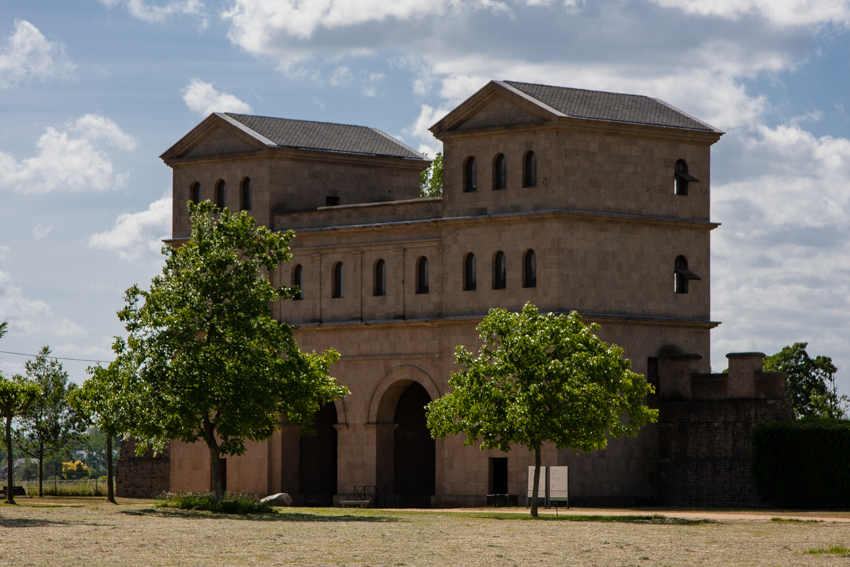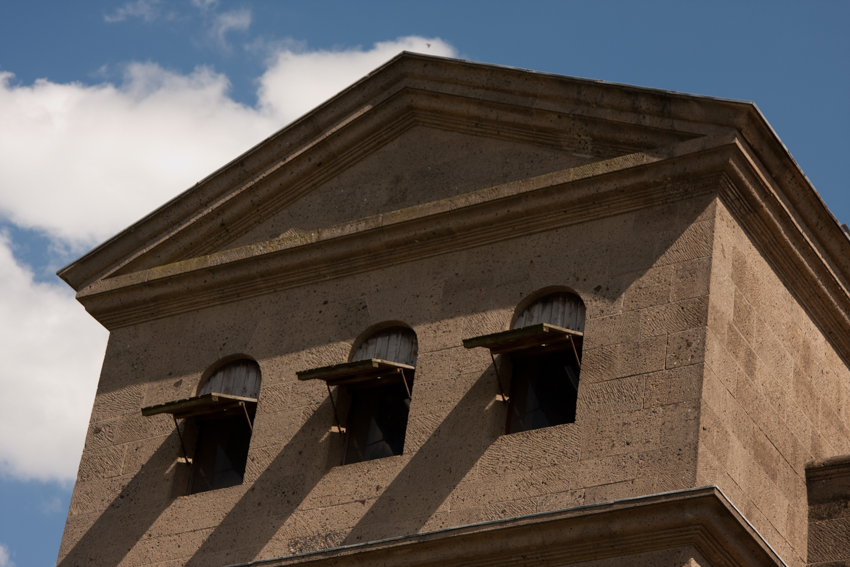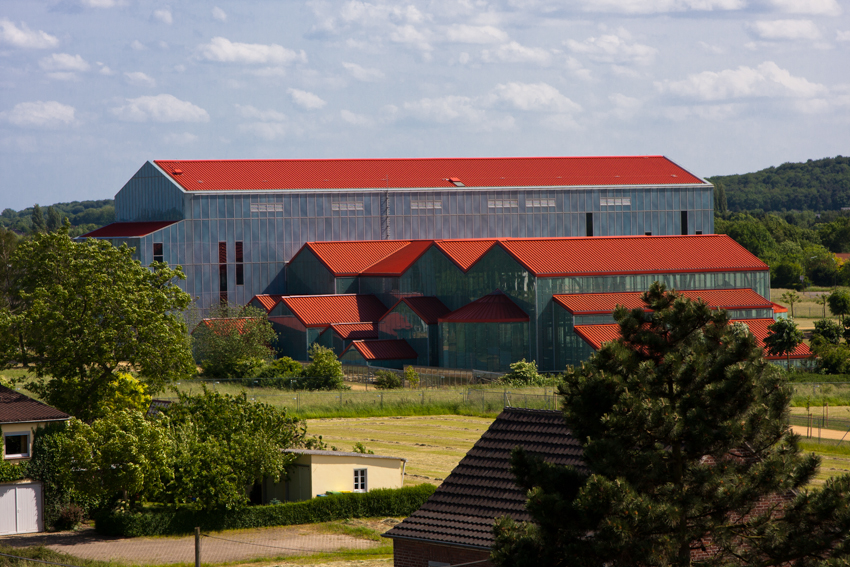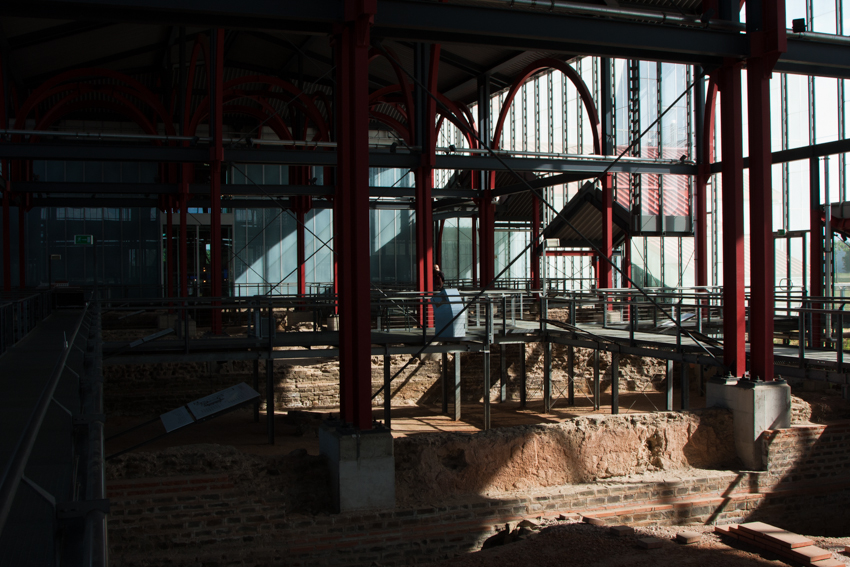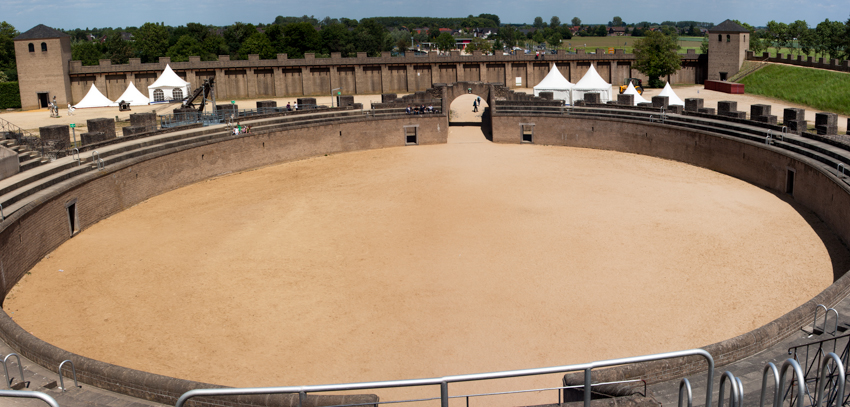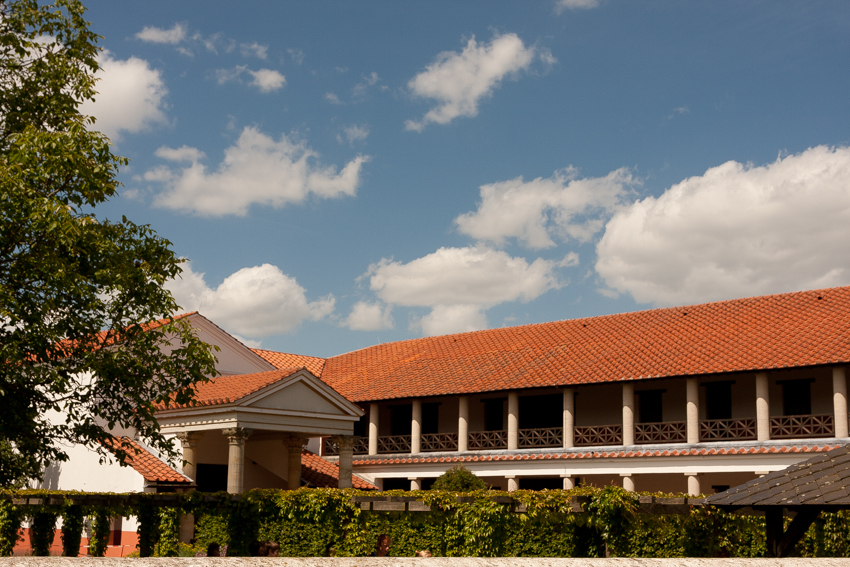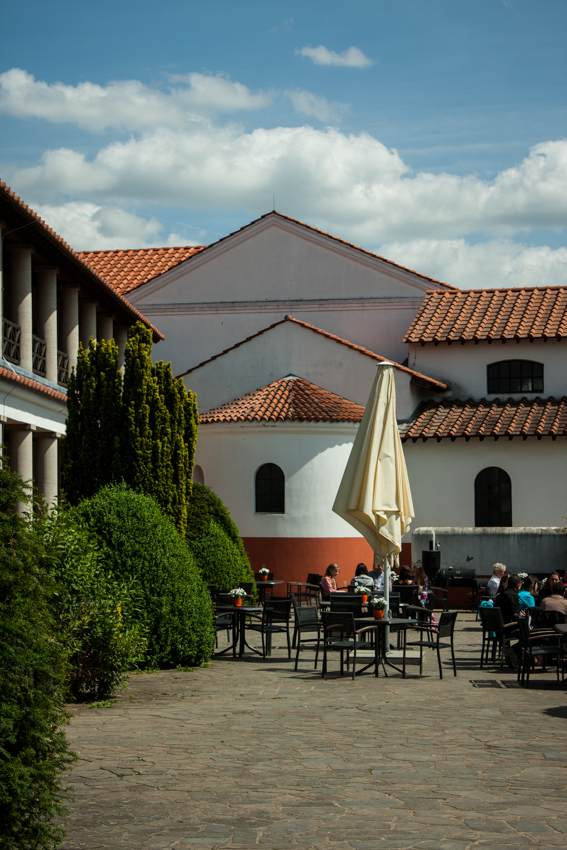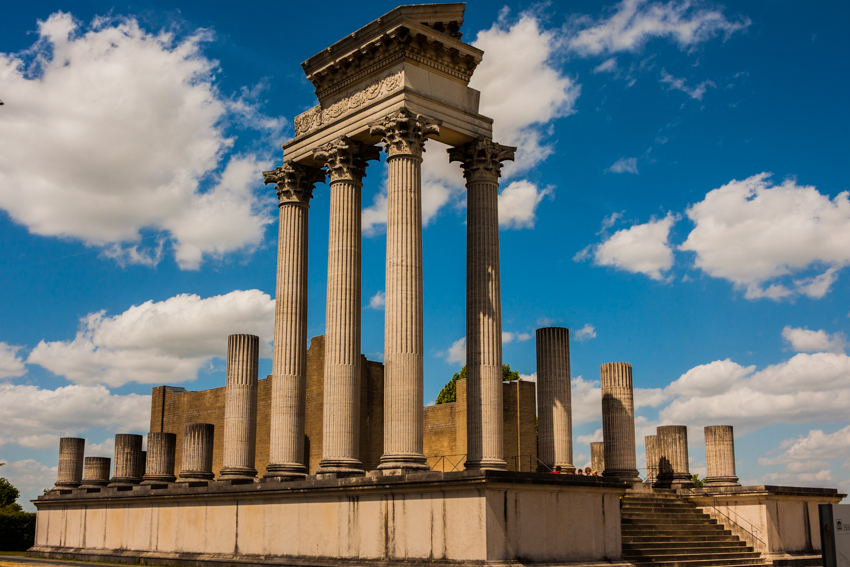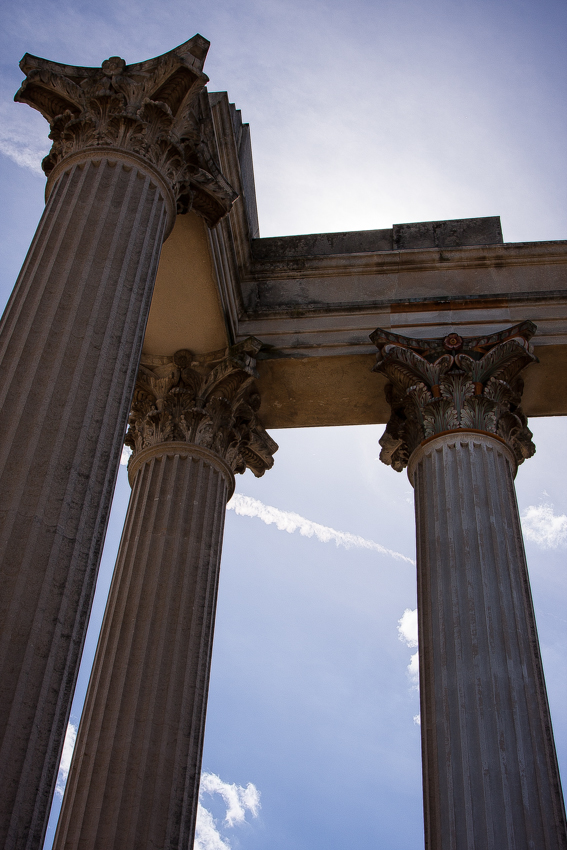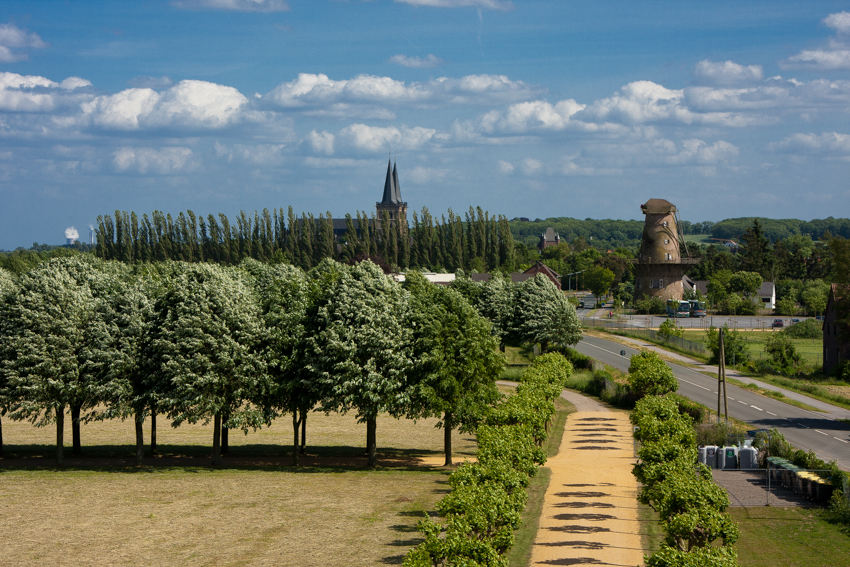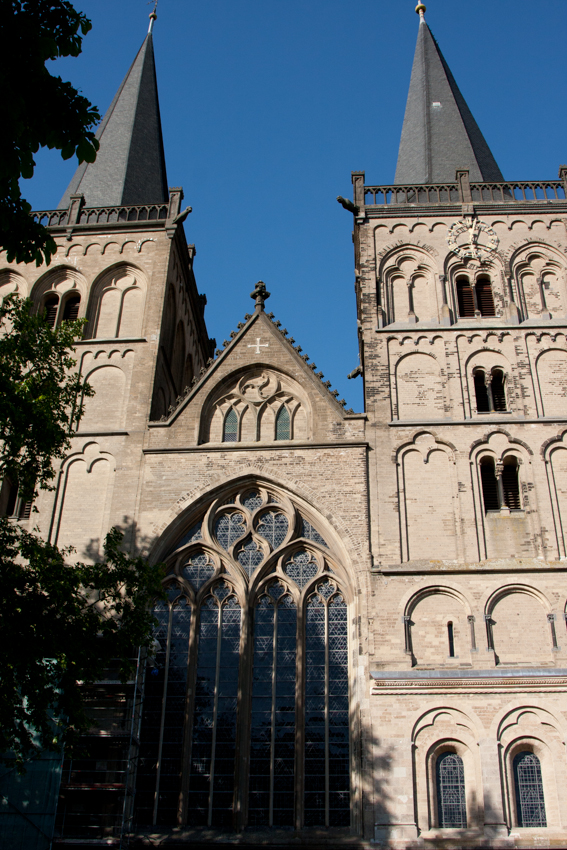This is the most beautiful day of the week thus far. The sunny blue sky was filled with fluffy white clouds. A strong wind made the very warm sunshine bearable for a long walk in Xanten. We returned to Germany via the Autobahn again. We entered the LVR RömerMuseum (Roman Museum) in Xanten during the early afternoon. This is another open air museum, with reconstructions of the town which was founded there in 99 AD, Colonia Ulpia Traiana. There are vast tracts of untouched land in the park. Some of the structures are complete and further excavation work is continuing.
Parts of structures are left exposed in certain areas to show the construction methods used by the ancient inhabitants. The entire park is green, from the endless fields to the leafy avenues of trees. A snack bar is conveniently tucked into one of the larger finished buildings. Parts of the park are only partially restored, such as the temple to the unknown deity. Most of the exhibit plaques were kind enough to supply English explanations alongside the Dutch and German. Much of it was recognizable, from the amphitheatre to the main city gate. The double tower gate building reminded me a lot of the Roman fortress gate in Trier, Germany.
That building served as the foundation for the naming of my area’s community system and even the high school’s insignia. Trier was mentioned in several places throughout the museum. I had a nice view of the area from the top of the gate. It appears they are in the middle of expansion and massive construction. It offered the best look at the steel and glass reconstruction of the bath house in the distance. We saved this awesome building for last. It was split into two sections, an exhibition center and the ruins themselves. The exhibition was full of artifacts found in the town and the nearby Roman fort, Vetera. It was semi-uncomfortable walking around inside.
The museum personnel were in radius of every exhibit section, watching everyone enter and their subsequent behavior. The better part was the steel and glass encasement in the back of the building. It was constructed to provide a scale idea of the original structure. It’s core was the Roman bath house ruin itself. Everything flowed nicely together, and was carefully excavated. I saw the footprint of a Roman who constructed in ancient times. Unfortunately much of the ruins left behind were junked by later inhabitants after the city fell. It was used as a quarry for stone (or tosteal the marble). The medieval “cathedral” of St. Victor in the town itself was constructed with stone from Colonia Ulpia Traiana.
We made sure to stop in the town to see it, as it was very visible from outside the town. Both of us were very sore from the extensive trip through Xanten and the Roman museum. We ended up slightly crispy sunburn wise, and crashed for the night when we returned. Even dinner was a quick trip to the Center Parcs snack bar.
